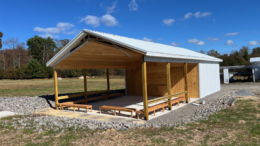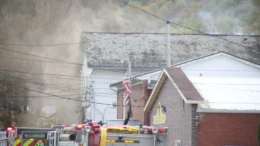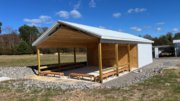The Oil City Council chambers in City Hall were filled Wednesday evening for a presentation on the East Second Street reconstruction project the city is planning.
City Manager Mark Schroyer explained the Pennsylvania Department of Transportation offered to turn over the road to the city along with $2.5 million for the reconstruction of the road and curbs.
The city accepted the offer and will now repair the road and be responsible for maintenance.
The project will involve replacing the road, sidewalks, and water and sewer lines as well as installing curb ramps that are compliant with the Americans with Disabilities Act at every intersection along East Second Street from Wilson Avenue to Route 62, the area known as Buzzard’s Bend.
David Neill, an engineer with the EADS Group overseeing the project, said the island at the intersection of Wilson Avenue and East Second Street will be eliminated and replaced with pavement and painted with markings to direct traffic flow.
At the other end of East Second Street, where it intersects with Route 62, the one-way portion of East Second Street will be eliminated and replaced with grass, causing all traffic to enter and exit East Second Street by the current two-way portion of the road, Neill said.
The sidewalks along the one-way portion of East Second Street will remain and be connected to the other existing sidewalks in the area, according to Neill.
If materials can be obtained at a reasonable cost, the plan is to advertise the project in February and award the bids in March. Construction would then run from March or April to September, Schroyer said.
Due to the cost and availability of materials, especially pipe, the timeline for the project could change, Schroyer said.
Pipe, he said, is difficult to obtain now due to shortages. When it can be obtained, there often is a 30% to 40% cost increase.
One idea that has been considered is to purchase pipe — provided the city can obtain it — and once it is known how much of which pipe will be needed, the contractor can draw on that supply, Schroyer said. City Councilman Ron Gustafson said he was intrigued by the idea and wants to explore it.
If materials are not available or not available at a reasonable price, the project would be pushed out to 2023, Schroyer said.
Both Schroyer and Neill were upfront about the disruption the project will cause for several months, as well as the long-term gains to the corridor.
They both assured business owners and residents who were in attendance that every accommodation will be made to provide for traffic and parking, but there will be times when access is limited or impossible due to construction.
To limit disruption, work will be done a block or two at a time, Neill said.
The water, sanitary and sewer lines, both mains, and lateral lines and service lines will be replaced to the property line, Schroyer said. The city will not require residents and businesses to replace lateral lines from their buildings to where it connects with the city’s lines, but it will be strongly encouraged.
He noted most of the lines are old and likely made of clay or terracotta that “leaks like a sieve” over time and causes other problems, but he also said replacing the old lines is expensive.
Replacing the laterals and connecting them into the lines the property owner is responsible for will cause disruption in service, especially while the lines are being disconnected and reconnected, but the disruption should not last more than a day for each building affected, Neill said.
The biggest disruption the construction will cause, he said, is parking issues in the area. During construction, signage will be up and flaggers will be used to direct traffic as needed.
Neill said the contract specifies work may begin at 7 a.m. and will not take place on weekends or holidays. The road will be accessible after work was completed for the day.
As time for construction nears and during it, Schroyer and Neill said the city, engineer and contractor will inform homes and businesses of when and where construction will cause disruption.
Schroyer noted at this time the city has no plans to buy properties in the area for redevelopment or use eminent domain to acquire property.
He noted economic development and revitalization of the area is under consideration. Now that East Second Street belongs to the city, it will be eligible to become part of the city’s Main Street program, though no decision has been made at this time.
Chris Sporer, of the Oil City Redevelopment Authority, noted the authority is interested in knowing if anyone along East Second Street would like to sell their property for the purposes of redevelopment.








































